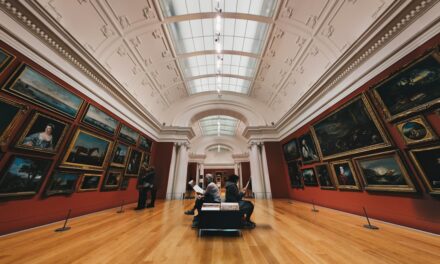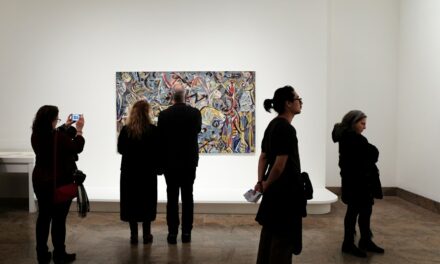Ink painting, a revered tradition in Asian art, boasts a rich and intricate history that spans thousands of years. Its origins can be traced back to ancient China, where it emerged during the Han Dynasty (206 BCE – 220 CE). Initially, ink painting was closely tied to calligraphy, as both art forms shared similar materials and techniques.
The early practitioners of ink painting sought to capture the essence of nature and the human experience through fluid brush strokes and monochromatic palettes. This pursuit of simplicity and depth laid the groundwork for what would become a profound artistic tradition. As the centuries progressed, ink painting evolved significantly, particularly during the Tang (618–907) and Song (960–1279) Dynasties.
These periods marked a golden age for the arts, with artists beginning to explore more complex themes and styles. The introduction of landscape painting during the Song Dynasty is particularly noteworthy, as it reflected the philosophical ideals of Daoism and Confucianism, emphasising harmony between humanity and nature. The use of ink allowed artists to convey not just visual representation but also emotional resonance, leading to a deeper connection between the viewer and the artwork.
This historical trajectory established ink painting as a vital component of Asian artistic heritage, influencing various cultures across the continent.
Summary
- Ink painting has a long history in Asian art, dating back to ancient China and Japan.
- Traditional Asian ink painting techniques involve the use of ink, brushes, and rice paper to create delicate and expressive artworks.
- Ink painting has had a significant influence on Asian culture and society, with its emphasis on harmony, simplicity, and spirituality.
- Notable artists in Asian ink painting include Wang Wei, Sesshū Tōyō, and Hasegawa Tōhaku, who have created masterpieces that continue to inspire artists today.
- The evolution of ink painting in modern Asian art has seen artists experimenting with new techniques and styles, while still preserving the essence of traditional ink painting.
The Techniques and Materials Used in Asian Ink Painting
The techniques employed in Asian ink painting are as diverse as the cultures that practice them. At its core, ink painting relies on the use of black ink made from soot and water, applied with brushes crafted from animal hair. The choice of brush is paramount; different brushes yield varying effects, from fine lines to broad strokes.
Artists often employ a technique known as “xieyi,” or freehand brushwork, which allows for spontaneous expression and captures the essence of the subject rather than its exact likeness. This approach contrasts with “gongbi,” or meticulous brushwork, which focuses on precision and detail, often used in portraiture and narrative scenes. In addition to brushes, the materials used in ink painting play a crucial role in the final outcome.
Traditional rice paper, known for its absorbency and texture, is commonly used as a canvas, allowing for fluid brushwork and subtle gradations of tone. Some artists also utilise silk, which offers a different texture and sheen.
The interplay between ink and paper, along with the artist’s technique, creates a dynamic visual language that speaks to both tradition and innovation.
The Influence of Ink Painting on Asian Culture and Society
Ink painting has profoundly influenced Asian culture and society, serving as a medium for philosophical expression and cultural identity. In many Asian societies, art is not merely an aesthetic pursuit but a reflection of spiritual beliefs and social values. Ink painting embodies this ethos by often depicting themes such as nature, harmony, and the transient nature of life.
These themes resonate deeply within various cultural contexts, reinforcing the interconnectedness of humanity and the natural world. Moreover, ink painting has played a significant role in education and scholarship throughout history. Scholars and literati often engaged in ink painting as a means of self-cultivation and intellectual expression.
The practice was seen as an extension of one’s moral character and scholarly pursuits, with many artists being esteemed figures in their communities. This intertwining of art with education has fostered a rich tradition where ink painting is not only appreciated for its aesthetic qualities but also revered as a vehicle for philosophical discourse and cultural continuity.
Notable Artists and Masterpieces in Asian Ink Painting
Throughout history, numerous artists have left an indelible mark on the world of ink painting, each contributing unique perspectives and styles to the tradition. One such figure is Wang Wei (701–761), a Tang Dynasty poet and painter whose landscapes epitomise the harmonious relationship between humanity and nature. His works often feature serene mountain scenes enveloped in mist, inviting viewers to contemplate their place within the natural world.
Wang Wei’s ability to evoke emotion through simplicity has made his masterpieces timeless treasures in the realm of ink painting. Another notable artist is Xu Beihong (1895–1953), who played a pivotal role in modernising Chinese ink painting while incorporating Western techniques. His famous work “The Horse” exemplifies his mastery of blending traditional brushwork with realistic representation.
These artists, among many others, have shaped the landscape of ink painting, creating masterpieces that continue to inspire admiration and study.
The Evolution of Ink Painting in Modern Asian Art
As society evolves, so too does art; ink painting is no exception to this rule. In the 20th century, artists began to challenge traditional conventions, experimenting with new forms and ideas while remaining rooted in their cultural heritage. The rise of modernism brought about significant changes in artistic expression, leading to a fusion of Eastern and Western influences.
Artists like Zhang Daqian (1899–1983) embraced abstraction while maintaining traditional techniques, creating works that resonate with contemporary audiences. The evolution of ink painting has also been marked by a growing interest in cross-cultural dialogue. Contemporary artists are increasingly exploring themes that reflect global issues such as identity, migration, and environmental concerns through the lens of ink painting.
This blending of traditional practices with modern sensibilities has resulted in a vibrant resurgence of interest in ink painting as an evolving art form that continues to adapt to contemporary contexts while honouring its rich history.
The Global Impact of Asian Ink Painting on Western Art
The Emergence of Eastern Aesthetics in Western Art
In the late 19th and early 20th centuries, Western artists began to take notice of Asian aesthetics, leading to a fascination with Eastern philosophies and artistic techniques. The Impressionists, for instance, were inspired by the fluidity and spontaneity found in ink paintings, which encouraged them to experiment with light and colour in new ways.
Abstract Expressionism and the Debt to Eastern Philosophies
Moreover, movements such as Abstract Expressionism drew heavily from Asian ink painting’s emphasis on gesture and spontaneity. Artists like Jackson Pollock acknowledged their debt to Eastern philosophies that prioritise process over product. This cross-pollination of ideas has enriched Western art practices while simultaneously elevating the status of Asian ink painting on the global stage.
A Vibrant and Dynamic Dialogue
As artists continue to explore these connections, the dialogue between Eastern and Western art remains vibrant and dynamic.
Preserving and Promoting Asian Ink Painting Heritage
As we navigate an increasingly globalised world, preserving the heritage of Asian ink painting becomes paramount. Various institutions and organisations are dedicated to safeguarding this rich tradition through education, exhibitions, and research initiatives. Museums across Asia and beyond host exhibitions showcasing historical works alongside contemporary interpretations, fostering appreciation for both traditional techniques and modern innovations.
Furthermore, educational programmes aimed at teaching young artists about ink painting techniques are essential for ensuring its continuity. Workshops led by master artists provide invaluable opportunities for students to learn directly from those who have dedicated their lives to this craft. By nurturing a new generation of artists who understand both the historical significance and contemporary relevance of ink painting, we can ensure that this cherished art form continues to thrive.
The Future of Asian Ink Painting in the Contemporary Art World
Looking ahead, the future of Asian ink painting appears promising yet challenging. As contemporary artists continue to push boundaries while honouring tradition, there is potential for exciting developments within this art form. The integration of technology into artistic practice offers new avenues for exploration; digital platforms allow artists to reach wider audiences while experimenting with innovative techniques that blend traditional methods with modern tools.
However, it is crucial that this evolution does not come at the expense of cultural authenticity. As artists navigate their identities within a global context, maintaining a connection to their heritage will be vital for preserving the essence of ink painting. By fostering dialogue between tradition and innovation, we can ensure that Asian ink painting remains a vibrant part of the contemporary art landscape—one that continues to inspire future generations while honouring its storied past.
Asian Art Heritage: Ink Paintings and Cultural Impact is a fascinating exploration of the influence of ink paintings on Asian culture. For further insight into the world of art, consider reading The Brushstroke Gallery, which delves into the significance of brushstrokes in artistic expression. This article provides a unique perspective on the artistic process and the impact of brushwork on the final masterpiece.
FAQs
What is Asian art heritage?
Asian art heritage refers to the rich and diverse artistic traditions and cultural expressions of the various countries and regions in Asia, including China, Japan, Korea, India, and Southeast Asia. This heritage encompasses a wide range of art forms, including painting, sculpture, calligraphy, ceramics, textiles, and more.
What are ink paintings in Asian art?
Ink painting is a traditional art form that has been practiced in Asia for centuries. It involves the use of black ink, typically made from soot and water, to create monochrome paintings on paper or silk. Ink paintings are known for their expressive brushwork, use of empty space, and emphasis on capturing the essence of the subject rather than its realistic depiction.
What is the cultural impact of ink paintings in Asian art?
Ink paintings have had a profound cultural impact in Asia, influencing not only the visual arts but also literature, philosophy, and spirituality. The emphasis on spontaneity, simplicity, and harmony in ink painting has shaped the aesthetic sensibilities of Asian societies and has been closely linked to the practice of calligraphy and poetry.
What are some famous examples of ink paintings in Asian art?
Some famous examples of ink paintings in Asian art include the landscapes of the Song dynasty master, Ma Yuan, the bamboo paintings of the Yuan dynasty artist, Wen Zhengming, and the plum blossom paintings of the Ming dynasty painter, Shen Zhou. These artists are celebrated for their mastery of ink painting techniques and their ability to convey deep emotional and spiritual resonance in their works.
How has Asian ink painting influenced Western art?
Asian ink painting has had a significant influence on Western art, particularly during the 19th and 20th centuries when artists such as Vincent van Gogh, Claude Monet, and Paul Cézanne were inspired by the expressive brushwork and compositional techniques of Asian ink paintings. This influence can be seen in the use of bold, gestural brushstrokes and the exploration of abstraction in Western art.


